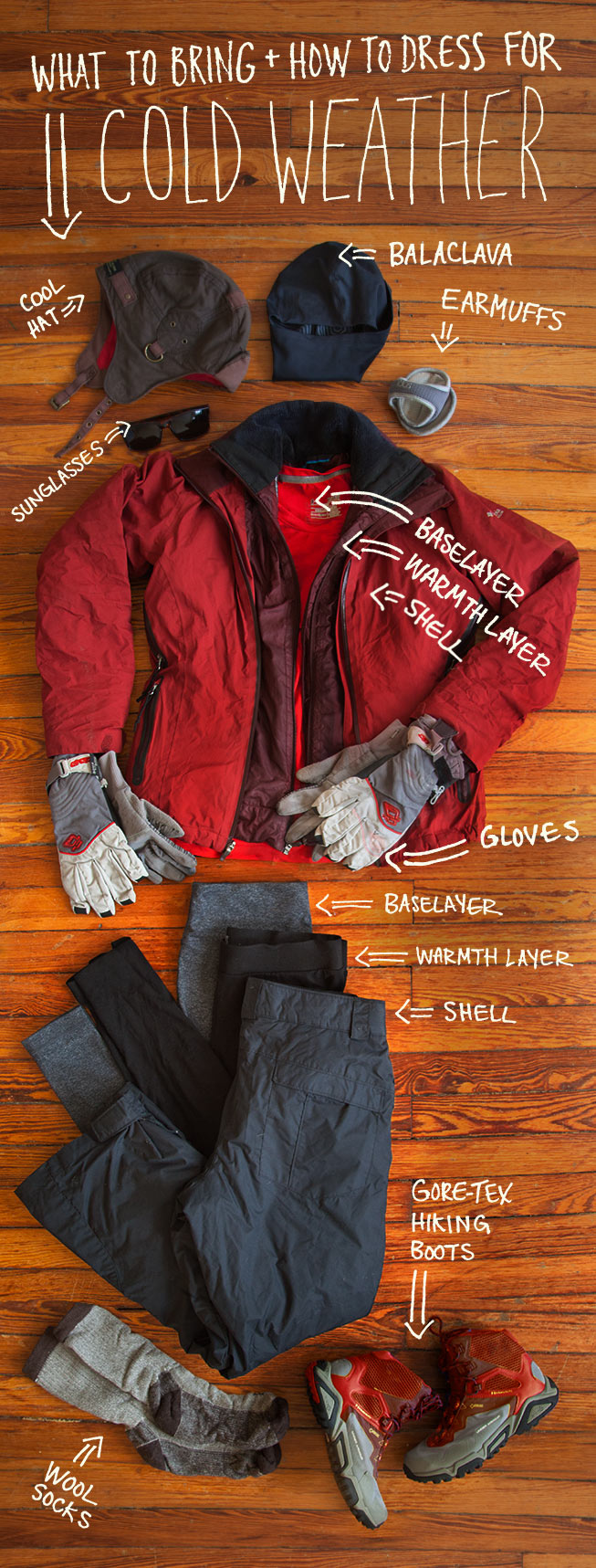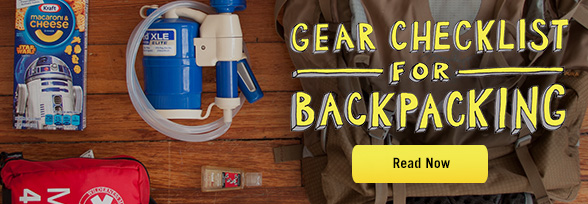Gear Check: How to Dress for Cold Weather Backpacking, and What to Bring
For Thanksgiving this year, I’m doing something a little different. I’m heading to Dolly Sods, West Virginia, USA for a cold weather backpacking trip with one of my friends. Dolly Sods has one of the most varied temperature ranges on the east coast due to its range of elevation and geographical location, and I wouldn’t be surprised if we see some snow. As much as I love Thankgiving food, I’m pretty pumped to make boxed mac and cheese in my little teapot over my pocket rocket.
Backpacking in cold temperatures requires a very different set of apparel. In the summertime, you can backpack naked if you want, no problem, but in the wintertime, it’s critical to pack the right gear so you don’t freeze/create a potentially dangerous situation when you’re in the back woods.
Headwear
Balaclava (baselayer for your head): I usually only wear a balclava (not to be confused with baklava) when it’s in the single digits or below. I like to bring it with me on cold trips just in case, you never know when you’ll need it, and if the weather takes a turn it’s better to be prepared.
Cool Hat: It’s important to have a silly hat. My hat of choice these days is this aviator style lined with red fleece. It’s so warm I usually just wear it at night.
Earmuffs: Earmuffs are great for backpacking when it’s not quite cold enough for a hat.
Sunglasses: Don’t forget your sunglasses— especially if there’s snow, or the possibility of snow. You should always have sunglasses anyway for UV protection, but in the wintertime, you don’t want irritated eyes from the wind, or snow blindness from being exposed to bright white light for extended periods of time.
Baselayer/Warmth Layer/Shell
This is the most important thing to remember when dressing for cold weather. Make it a mantra. Your baselayer should be a thin, moisture wicking long-sleeve shirt. This will keep moisture away from your skin, which is what makes you cold. Moisture is the biggest threat to body warmth.
Your warmth layer should be a down jacket, fleece, or thermal shirt, depending on how cold it’s going to be. I usually pack an extra fleece to wear under my down jacket at night, and when it gets warmer during the day actively backpacking, I use my down jacket as my warmth layer.
Shell. This is your windbreaking layer. It can have a lining if you’ll be backpacking in extremely cold temperatures, but either one works as long as it blocks the wind and is worn over your warmth layers.
*It’s important to follow this standard with bottoms as well, but keeping the core warm, where your vital organs are, is more important than your extemities. Usually I’ll wear a baselayer (mositure wicking yoga pants), with thick leggings, and only if it’s really cold/windy, windbreaker pants.
Gloves
Bring two pairs of gloves; baselayer gloves which are good for dexterity, and really warm windbreaking gloves. If it gets hot during the day, you can wear the thinner ones, and if the temperature drops you can switch.
Footwear
Boots
In the summertime, I wear whatever footwear I want to backpack. I think it’s important to keep in mind you don’t need the most expensive gear on the market to get outside. That said, in particular for cold weather backpacking, it’s a good idea to have waterproof/Gore-tex boots in case of melting snow so you won’t be walking around in wet shoes. In the summertime it’s no problem, but in the wintertime, it could turn into an issue, or you’ll just be really miserable for the remainder of the trip.
Socks
Wool socks are great for wicking sweat away from your skin. If you have tender feet, wear them inside out so the seams don’t rub up against your skin and cause blisters. Bring an extra pair or two depending on how much you sweat, that way your feet will always be nice and dry.
Underwear
A word about under garmets. Don’t wear them. If you need to wear them, buy a synthetic blend that doesn’t absorb moisture to avoid chafing.
*Gear gets sweaty after hiking around all day. Make sure when you set up camp for the night you air your damp clothes out. It’s good to bring an extra set of baselayer, so while one set is drying out overnight, you’ll have something dry to put on to stay warm.
Happy Thanksgiving!
 Dani Bradford is an explorer/designer/adventurer who has traveled extensively across the globe. Dani most recently completed a 4,500 mile+ cycling journey across Europe through 15 countries, from Portugal to Georgia. She loves squirrels, believes wholeheartedly in a minimalist lifestyle, and idolizes Han Solo.
Dani Bradford is an explorer/designer/adventurer who has traveled extensively across the globe. Dani most recently completed a 4,500 mile+ cycling journey across Europe through 15 countries, from Portugal to Georgia. She loves squirrels, believes wholeheartedly in a minimalist lifestyle, and idolizes Han Solo.


